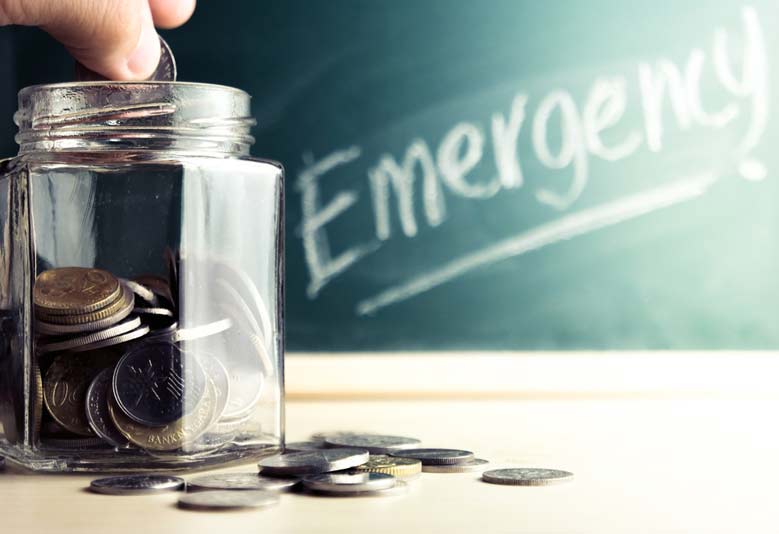Should You Pay Off Debt or Build an Emergency Fund First?
The tension between paying off debt and building savings is one of the most common dilemmas in personal finance. Both are crucial for financial health, but limited resources often force us to choose where to focus first. This guide will help you navigate this critical decision based on your specific circumstances.
Key Takeaway:
Most people benefit from a small starter emergency fund ($1,000-$2,500) before aggressively paying down debt, followed by building a full emergency fund (3-6 months' expenses) after becoming debt-free. Exceptions exist for very high-interest debt or unstable income situations.
The Case for Prioritizing Debt Payoff
Arguments for focusing on debt first:
- High-interest debt grows rapidly: Credit card debt at 18-25% APR can double in 3-4 years
- Debt payments limit cash flow: Minimum payments reduce money available for emergencies
- Psychological burden: Debt causes stress that affects overall wellbeing
- Opportunity cost: Money going to interest can't be invested or saved
Mathematically, paying off high-interest debt often provides a better "return" than money sitting in savings earning minimal interest.
The Case for Prioritizing an Emergency Fund
Arguments for building savings first:
- Prevents new debt: Emergencies will happen—without savings, you'll likely go deeper into debt
- Reduces financial stress: Knowing you have a cushion provides peace of mind
- Creates stability: Allows you to take calculated risks (job changes, career moves)
- Protects against setbacks: Job loss or medical issues won't derail debt progress
Behavioral economists note that having savings changes financial decision-making, making people less likely to make panic-driven choices.
A Middle Path: The Starter Emergency Fund
Many financial experts recommend a hybrid approach:
- Save a small emergency fund ($1,000 or one month's expenses)
- Aggressively pay down debt while maintaining that starter fund
- After debt freedom, build a full emergency fund (3-6 months' expenses)
This balances the need for some liquidity with the urgency of stopping high-interest debt growth.
Factors That Should Influence Your Decision
Consider prioritizing debt payoff more if:
- You have high-interest debt (APR > 10%)
- Your job/income is stable
- You have access to other resources (family help, low-cost credit options)
- Your debt causes severe anxiety
Consider prioritizing savings more if:
- Your debt has low interest rates (APR < 6%)
- Your income is irregular or unstable
- You have dependents relying on you
- You're in a high-risk industry for job loss
Pro Tip:
Calculate your "debt emergency ratio": Divide your total non-mortgage debt by your emergency savings. If the ratio is above 10:1 (e.g., $20,000 debt with $2,000 savings), focus more on debt payoff. Below 5:1, you can emphasize savings.
Practical Strategies to Balance Both
You don't always have to choose exclusively between debt and savings. These strategies help address both:
- The 80/20 split: Put 80% of extra money toward debt, 20% toward savings
- Windfall allocation: Use bonuses, tax refunds, or gifts to boost both categories
- Debt payoff savings: After paying off a debt, redirect that payment amount to savings
- Tiered approach: Save $1,000, pay off debts above 10% APR, save to one month's expenses, pay off remaining debts, then build full emergency fund
What the Research Shows
Studies on this dilemma reveal:
- People with even small emergency funds are less likely to accumulate new debt when faced with unexpected expenses
- Those who focus solely on debt repayment often relapse into debt when emergencies arise
- The psychological benefits of savings often outweigh the mathematical benefits of early debt payoff
- Combination approaches tend to have the highest long-term success rates
Special Considerations
Unique situations that might alter the standard advice:
- Self-employed/irregular income: Larger emergency funds are crucial (6-12 months)
- Medical conditions: Higher savings needed for potential health expenses
- Debt settlement plans: May require showing some savings as part of negotiations
- Low-interest debt: May make sense to prioritize savings even while carrying debt
Ultimately, the debt vs. savings decision isn't purely mathematical. It's about creating a sustainable financial system that accounts for both the numbers and human behavior. By finding the right balance for your situation, you can make steady progress toward both debt freedom and financial security.






